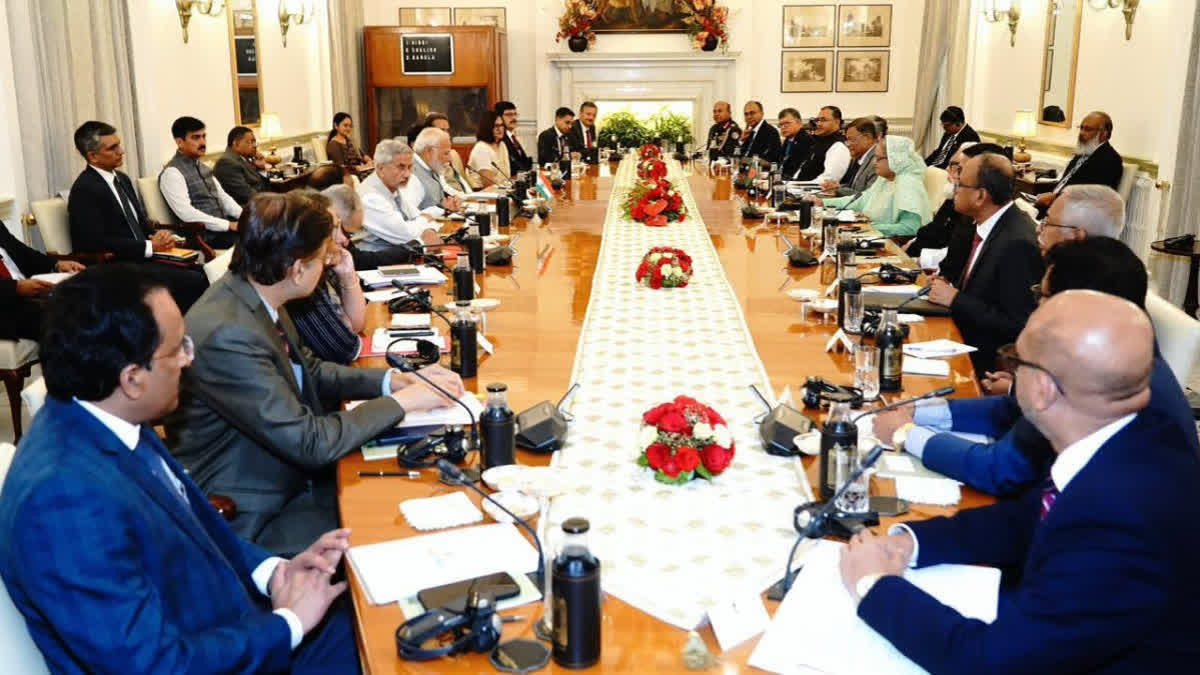New Delhi: China’s assertion that it is open to accept any decision Bangladesh takes on the Teesta River Comprehensive Management and Restoration Project (TRCMRP) should be welcome news for Dhaka ahead of Prime Minister Sheikh Hasina’a visit to Beijing next week.
The Chinese statement comes in the wake of India showing interest in the project and announcing that it will send a technical team to do a feasibility study. India announced this decision during Hasina’s visit to New Delhi last month.
Addressing the media in Dhaka on Thursday, Chinese Ambassador to Bangladesh Yao Wen said that his country is open to any decision Bangladesh takes on the TRCMRP as long as it helps Dhaka maintain good relations with its neighbours.
“We are open as long as it will be conducive for Bangladesh,” The Dhaka Tribune quoted Yao as saying. “China is open. It’s purely on Bangladesh to decide what to do at the next stage.”
Asked whether China would be willing to work with India on the project, Yao said: “"I said it’s purely decided by Bangladesh. We are open. We want to see Bangladesh have good relations with neighbouring countries, with other countries. You know, it is a success of your national foreign policy. So we want to see good relations. And also we want our relations to be playing a positive role and be willed positively by the other countries. So that is win-win cooperation and will benefit all parties.”
It worth mentioning here that, at the request of Bangladesh, China did a feasibility study to address the persistent water crisis of the Teesta River. The Chinese power corporation submitted the TRCMRP report, which was subsequently approved by the Bangladeshi authorities. China also offered a $1-billion line of credit to Bangladesh to implement the project.
So, what exactly is the TRCMRP?
The Teesta River, one of the major transboundary rivers in the region, flows through the Indian states of Sikkim and West Bengal before entering Bangladesh. Out of its total length of 414 km, the Teesta River flows for about 151 km through Sikkim, nearly 142 km through West Bengal, and the final 121 km through Bangladesh.
It plays a crucial role in the agriculture and livelihoods of millions of people in both countries. However, India and Bangladesh have been locked in a dispute over the sharing of the river’s waters mainly due to objections raised by West Bengal Chief Minister Mamata Banerjee.
The Teesta River is vital for irrigation, drinking water, and sustenance of biodiversity in the regions it flows through. However, the river faces significant challenges such as seasonal water scarcity, sedimentation, and pollution, making its conservation and management a critical issue for the Bangladeshi government.
The TRCMRP was initiated by the Bangladesh government for water resource management, flood control and management, ecosystem restoration, pollution control and community engagement. The objectives include ensuring a sustainable and equitable distribution of water for agricultural, industrial, and domestic use; implementing measures to prevent floods during the monsoon season and managing water flow during the dry season; restoring the riverine ecosystem to support biodiversity and maintain ecological balance; reducing pollution levels through strict regulations and promoting cleaner production practices in industries; and involving local communities in conservation efforts and ensuring their livelihood is supported through sustainable practices.
Why should India be concerned about China’s involvement in the TRCMRP?
China’s influence in Bangladesh affects the broader regional power dynamics, challenging India’s traditional sphere of influence in South Asia. As Bangladesh grows closer to China, India’s influence in Dhaka may diminish. This shift could impact regional cooperation initiatives led by India and affect India’s strategic interests in South Asia.
The growing China-Bangladesh relationship might encourage other South Asian countries to seek closer ties with China, further diluting India’s influence in the region. This could lead to a more fragmented regional order, with China emerging as a dominant player.
India is presumed to have a reservation over China’s involvement in a major project like the TRCMRP near its strategic Siliguri Corridor, also known as the Chicken’s Neck connecting northeastern India with the rest of the country. The corridor is close to the India-China border. Bangladesh’s foreign ministry has also said that Dhaka would take into cognizance the geopolitical issues in proceeding with the proposal.
So, what has India offered to Bangladesh in terms of the TRCMRP?
Following the delegation-level talks between Prime Minister Narendra Modi and his Hasina in New Delhi last month, India announced its decisions to send a technical team to study the TRCMRP.
“Fifty-four common rivers connect India and Bangladesh,” Modi said during a joint address to the media along with Hasina after the discussions. “We have been cooperating on flood management, early warning, and drinking water projects. We have decided to start talks at the technical level for the renewal of the Ganga Water Treaty of 1996. A technical team will soon visit Bangladesh to discuss the conservation and management of Teesta River in Bangladesh.”
India also announced that it will open an assistant high commission at Rangpur in Bangladesh. The TRCMRP comes within the area of Rangpur. This project is within Bangladesh territory. So, Mamata Banerjee cannot have any say in this. By making the counter-offer, India has effectively checkmated China.
How has Hasina responded to India’s offer?
Following her return to Dhaka from New Delhi, Hasina said at a press conference that Bangladesh would consider the proposals of both India and China. “We undertook the Teesta project,” she said. “China has proposed, and so has India. We will evaluate both proposals and accept the one that is most beneficial and acceptable in terms of the interests of our people.”
Hasina said that Bangladesh maintains its friendships based on the developmental needs of the country. “When we receive a proposal, we consider factors such as its suitability for us, our capacity to repay any loans, the returns we will enjoy after project completion, and how it will benefit the people of our country,” she said.
However, at the same time, she pointed out that Bangladesh has a longstanding issue over Teesta River water sharing with India. “So, it will be easy for Bangladesh if India does the Teesta project,” she said. “In that case, we won’t need to talk about the Teesta water sharing always.”
So, how can Ambassador Yao’s statement on Thursday be interpreted?
“The Ambassador said what any diplomat in his place would have said,” K Yhome, Fellow at the Shillong-based Asian Confluence think tank, told ETV Bharat.
“If you look at the geopolitics in Bangladesh, the India-China rivalry has intensified over the years over issues like development projects, including seaports,” Yhome said. “During her reign, Prime Minister Hasina has been trying to balance relations between India and China. To her credit, she has managed to accrue benefits from both the countries.”
According to another expert on Bangladesh who spoke to ETV Bharat on the condition of anonymity, China has realised that it will be difficult to implement a project like the TRCMRP in India’s immediate neighbourhood.
“Actually, China is looking for other issues,” the expert said. “Beijing wants to keep Dhaka within China’s Indo-Pacific ambit.” According to Yhome, when Hasina goes to Beijing, China will try to find out what she has to offer in lieu of the TRCMRP.
“Hasina has deftly managed to navigate through the India-China rivalry in South Asia which other smaller countries in the region like Nepal, Sri Lanka and the Maldives have not been able to. In a way, Hasina has set an example to such countries,” he said.
Read More



